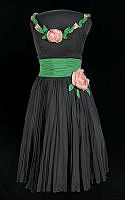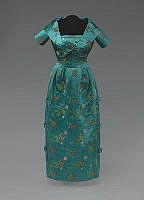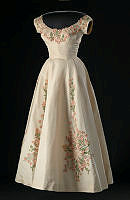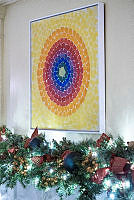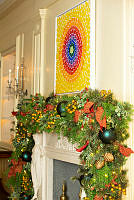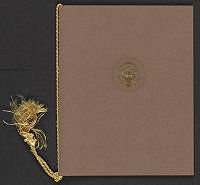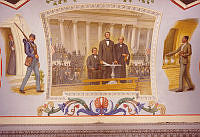The Working White House: A Mirror - The 19th Century
Copyright © White House Historical Association. All rights reserved under international copyright conventions. No part of this article may be reproduced or utilized in any form or by any means, electronic or mechanical, including photocopying, recording, or by any information storage and retrieval system, without permission in writing from the publisher. Requests for reprint permissions should be addressed to books@whha.org
Gallery
-

White House census record, 1830. The U.S. Census in 1830 recorded 14 enslaved individuals living in the White House while Andrew Jackson was president. Six enslaved workers were male (two under 10 years; two between 10 and 24; and two between 24 and 36). Eight enslaved workers were female (three under 10; four between 10 and 24; and one between 24 and 36).
National Archives and Records Administration -

Paul Jennings was born into slavery on James Madison’s estate at Montpelier in 1799 and later served as the president’s "body servant" until Madison died in 1836. Pollard Webb, an insurance and real estate agent, purchased Jennings from Dolley Madison in September 1846, and sold him to U.S. Senator Daniel Webster for $120 six months later. This 1847 signed agreement between Paul Jennings and Daniel Webster spells out the ways in which Jennings will repay Daniel Webster for having purchased Jennings’ freedom from Pollard Webb.
Moorland-Spingarn Research Center, Howard University -

Book cover of Colored Man’s Reminiscences of James Madison by Paul Jennings, 1865. It is the first documented memoir by a White House worker and remained obscure for many years because so few copies were printed.
Moorland-Spingarn Research Center, Howard University -

Jerry Smith, North Portico, c. 1889. Smith started working at the White House during the Ulysses S. Grant administration in the late 1860s, and served as butler, cook, doorman, and footman until his retirement some 35 years later. He was often seen with his signature feather duster. Shortly before dying at age 69 in 1904, Smith was visited at his home by President Theodore Roosevelt.
Library of Congress -

White House doormen, 1889-93. In the 1890s, when this photograph was taken at the North Portico, White House doorkeepers were responsible not only for meeting the arrival of carts and carriages, but also for directing maids and footmen. Many doorkeepers were former police officers.
Library of Congress -

Setting the table in the Family Dining Room, 1890s. A housemaid, her dress covered with a crisp white apron, sets the table in the White House’s private dining room. The high chair was for Esther Cleveland, born at the White House in 1893.
Harper's New Monthly Magazine -

List of workers in the greenhouse and grounds, 1888. Among those working as laborers and gardeners on the White House grounds in 1888 were employees born in France, Germany, Ireland, Scotland, and Switzerland, as well as Maryland, Pennsylvania, Virginia, and Washington, D.C.
National Archives and Records Administration -

Lamplighter job description, 1888. Working on average five hours a day, the White House lamplighter was responsible not only for illuminating and extinguishing the lamps, but also for lighting fires, removing ashes, cleaning the basement, and polishing the ranges. Electric lights were not installed in the White House until 1891.
National Archives and Records Administration
The occupational culture and management of the 19th-century White House reflected the social climate and ethnic composition of Washington, D.C.
The White House staff, like that of many elite Washington households, was racially and ethnically mixed. Because managerial roles were usually assigned to white employees, tensions sometimes developed between white stewards and African American house workers.
The Executive Mansion was run according to accepted practices for operating a prominent mid-Atlantic household. Washington’s social elite had a high standard for entertainment and household service, and expected the same when attending White House teas, dances, and dinners.
The mansion and grounds were open to the public during certain hours of the day; any visitor who dropped in unannounced might be taken straight to the president’s office. Women of society left cards to let the first lady know they had come to call. Ushers, guards, doormen, and messengers often did double duty in the executive offices and the residence, screening visitors and carrying out tasks associated with social and domestic life in the White House.








